A Western Meadowlark that made its displeasure known about the presence of a hunting owl in its territory.
Occasionally I rerun a favorite older post. I like this one for its behavioral documentations and for its somewhat dramatic illustration of the depth of field limitations of long focal length lenses. The post was originally published in July of 2017. For this version I’ve edited the text, changed the title and tweaked the formatting.
1/3200, f/6.3, ISO 800, Canon 7D Mark II, Canon EF 500mm f/4L IS II USM + 1.4 tc, not baited, set up or called in
I witnessed the minor confrontation two days ago when I spent nineteen minutes with this adult Burrowing Owl as it hunted from various elevated perches and on the ground. Even though its relaxed one-legged pose suggests it might have been taking a break, the dried blood on its beak…
1/3200, f/6.3, ISO 800, Canon 7D Mark II, Canon EF 500mm f/4L IS II USM + 1.4 tc, not baited, set up or called in
and its constant and obvious scanning of the nearby grasses in all directions made it abundantly clear that it was in intense hunting mode.
1/3200, f/6.3, ISO 800, Canon 7D Mark II, Canon EF 500mm f/4L IS II USM + 1.4 tc, not baited, set up or called in
Eventually it abandoned the fence post as a hunting perch and flew down to the ground and hunted from there for a few minutes. Naturally, when it took off its right wing covered its face. I think I would have quite liked this shot if only the right wing had been an inch higher to reveal that bright yellow eye in a peek-a-boo pose.
I’m pretty sure the softness of the wings is caused by a lack of depth of field rather than insufficient shutter speed.
1/4000, f/6.3, ISO 800, Canon 7D Mark II, Canon EF 500mm f/4L IS II USM + 1.4 tc, not baited, set up or called in
But eventually the owl spent most of its time hunting from sagebrush and I just happened to click my shutter as a very unhappy meadowlark flew in (it can be seen in flight as a blurry blob at left)…
1/4000, f/6.3, ISO 800, Canon 7D Mark II, Canon EF 500mm f/4L IS II USM + 1.4 tc, not baited, set up or called in
and landed on another sagebrush about 3′ behind the owl.
1/3200, f/7.1, ISO 800, Canon 7D Mark II, Canon EF 500mm f/4L IS II USM + 1.4 tc, not baited, set up or called in
At that point I played focusing games with the two birds
By its body language and almost constant calling, the meadowlark made it clear that it was highly disturbed by the presence of the owl in its territory. Perhaps it had a nest or fledglings nearby.
- The meadowlark didn’t sing the melodic song they’re so well-known for – instead it was blasting out the sharp “chupp call” that meadowlarks typically use on intruders when they first enter their territory. If you have the interest you can hear that chupp call here – scroll down to the call labeled “churts” and click on the link (for some reason Audubon calls it a churt instead of a chupp).
1/5000, f/6.3, ISO 800, Canon 7D Mark II, Canon EF 500mm f/4L IS II USM + 1.4 tc, not baited, set up or called in
Several times the frantic meadowlark flew a short distance away from its sagebrush perch…
1/5000, f/6.3, ISO 800, Canon 7D Mark II, Canon EF 500mm f/4L IS II USM + 1.4 tc, not baited, set up or called in
but it always came back to the same sagebrush and continued to make its displeasure known in a variety of ways. Here I thought its alert body posture was particularly expressive of its tension.
1/400, f/14, ISO 500, Canon 7D Mark II, Canon EF 100-400mm f/4.5-5.6L IS II USM @ 214 mm, not baited, set up or called in
At one point during the “discussion” I pulled out one of my other cameras with a much smaller zoom lens attached and took a few shots at shorter focal lengths in an effort to get both birds sharp. I think this photo, when compared to the others, is an excellent illustration of how limited my depth of field is when shooting at the extreme focal lengths of my 500mm lens with attached teleconverter.
It also gives us a better look at the sagebrush habitat that both species often seem to prefer during nesting season.
1/4000, f/7.1, ISO 640, Canon 7D Mark II, Canon EF 500mm f/4L IS II USM + 1.4 tc, not baited, set up or called in
The confrontation ended with a whimper instead of a bang when the owl flew down to the ground and hunted from there and the meadowlark simply flew off.
There’s nothing dramatic in today’s post but I find these fairly subtle behaviors interesting and they all add up to a better understanding of birds. That’s always been one of my goals with my bird photography.
After all, nature photographers who understand their subjects well inevitably become better photographers.
Ron


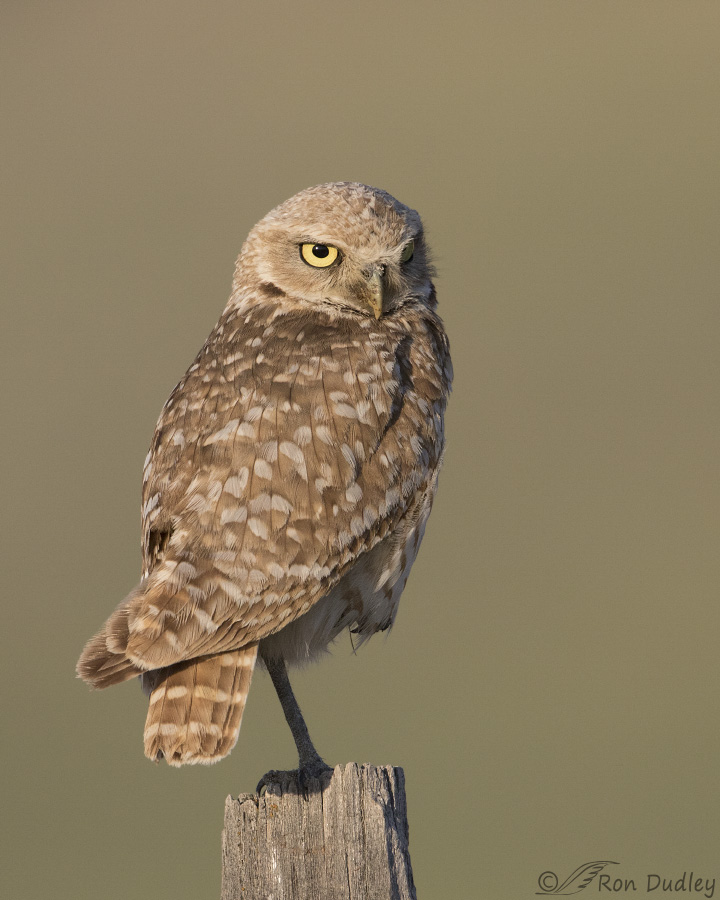
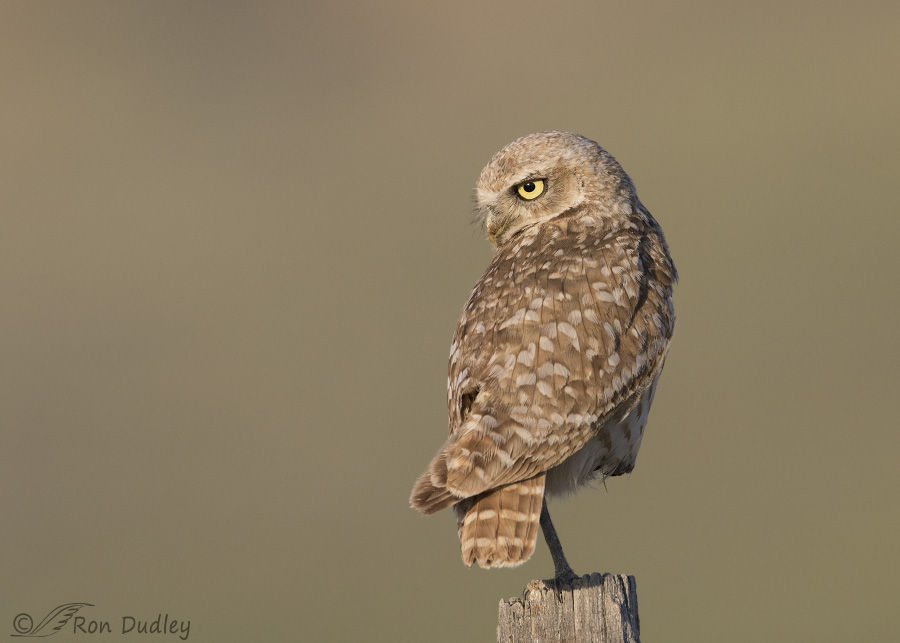
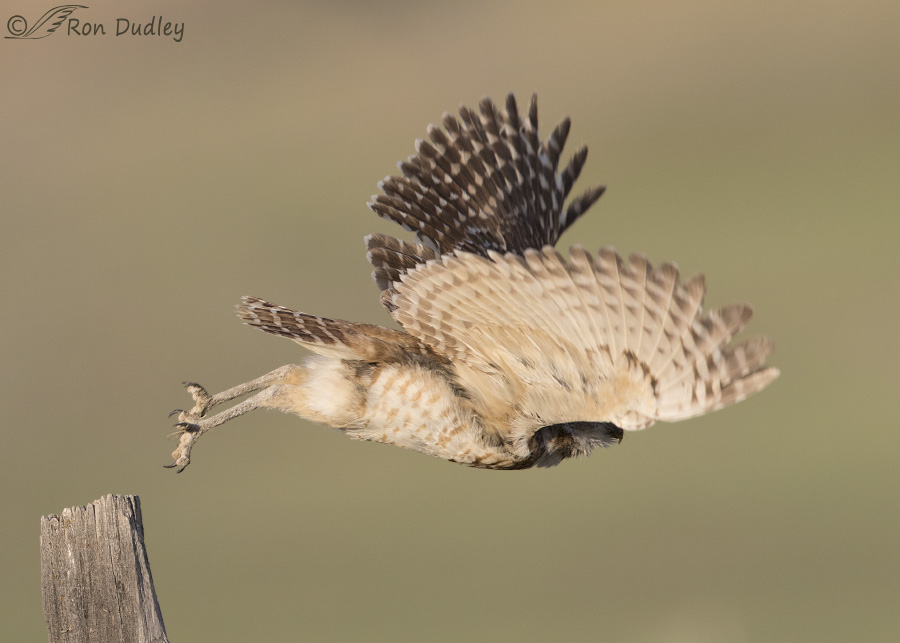
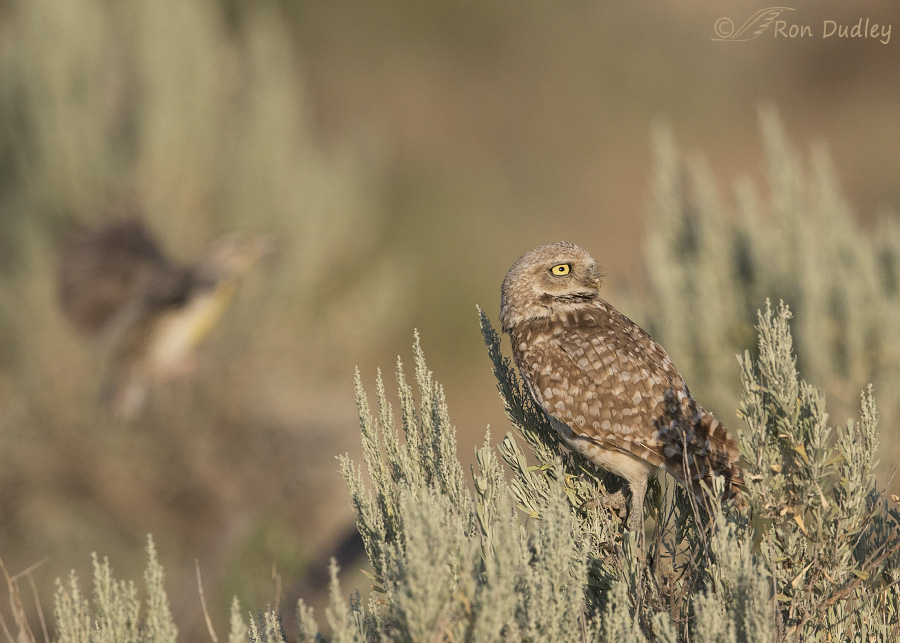
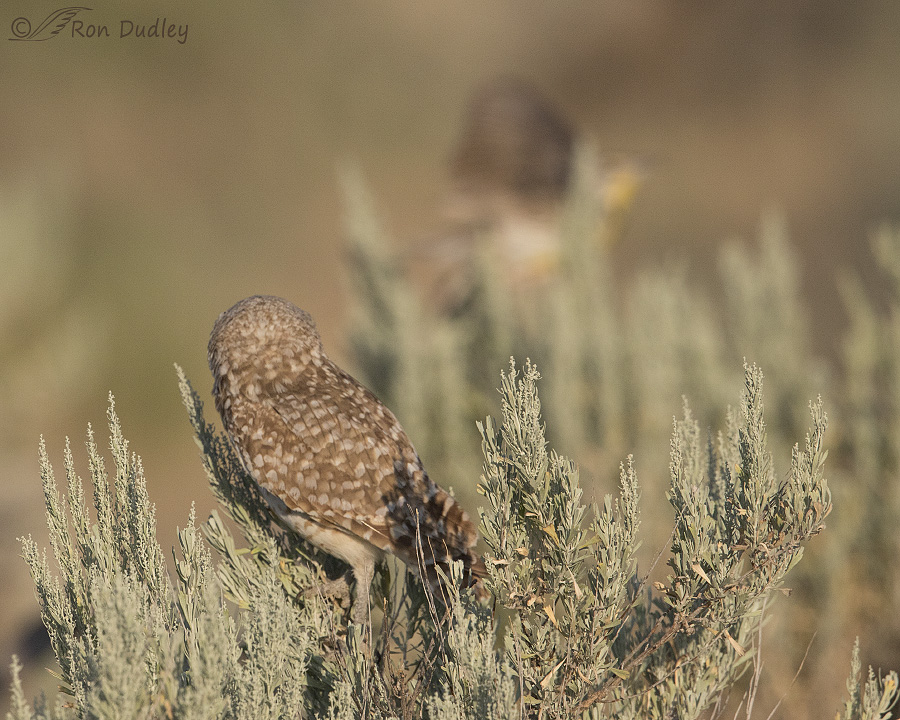
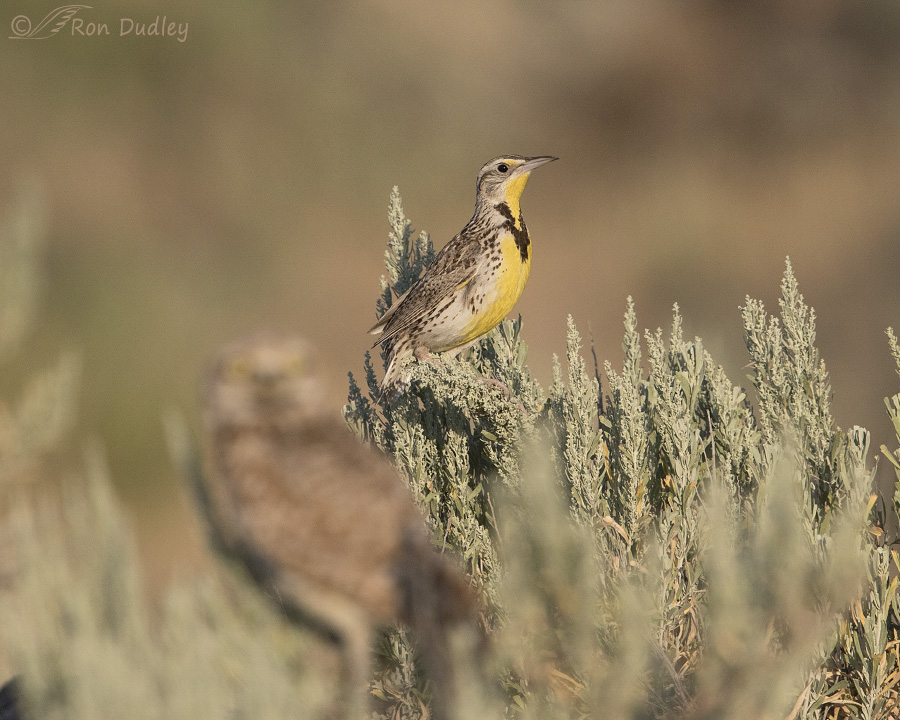
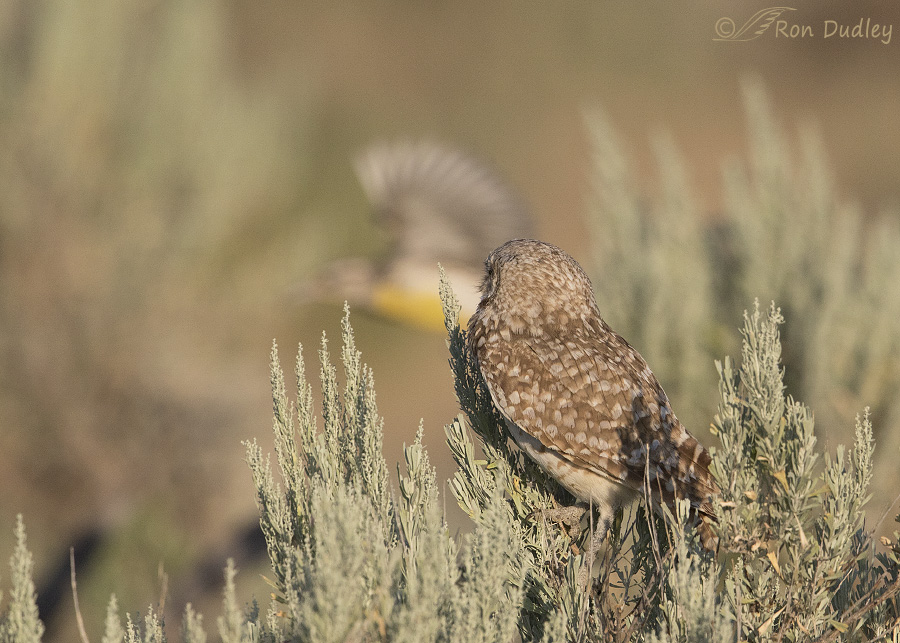
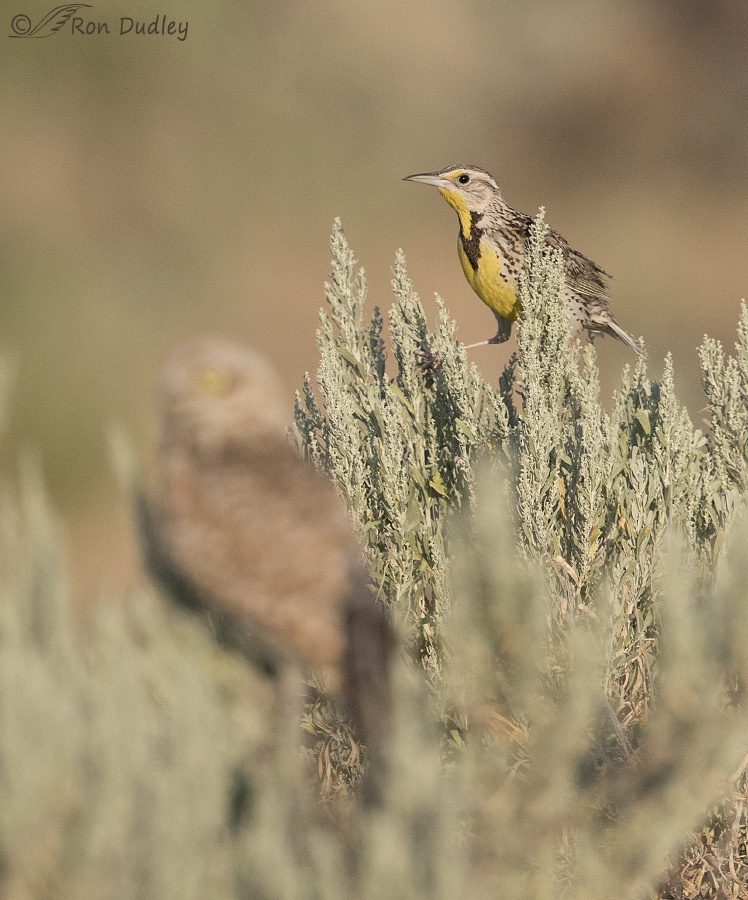
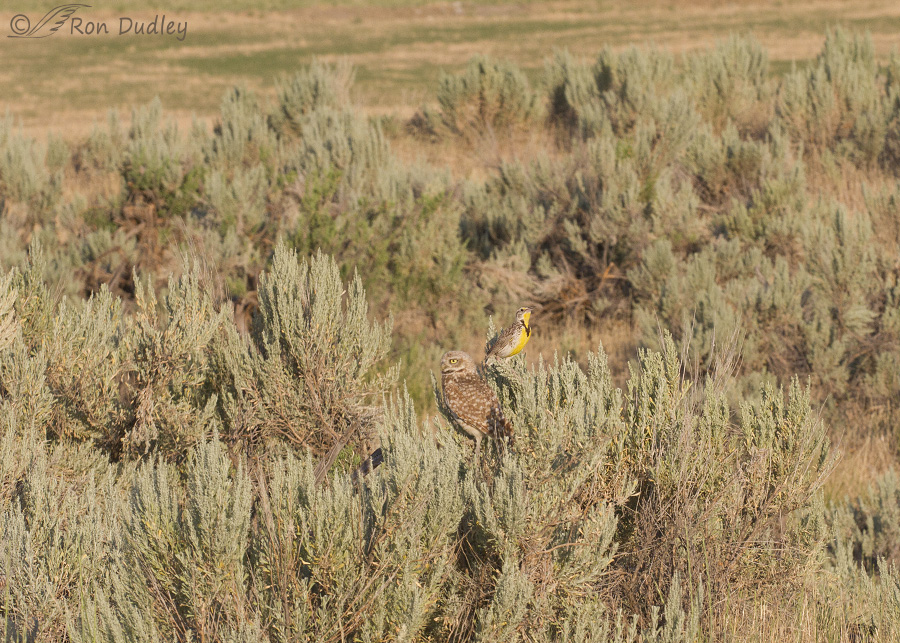
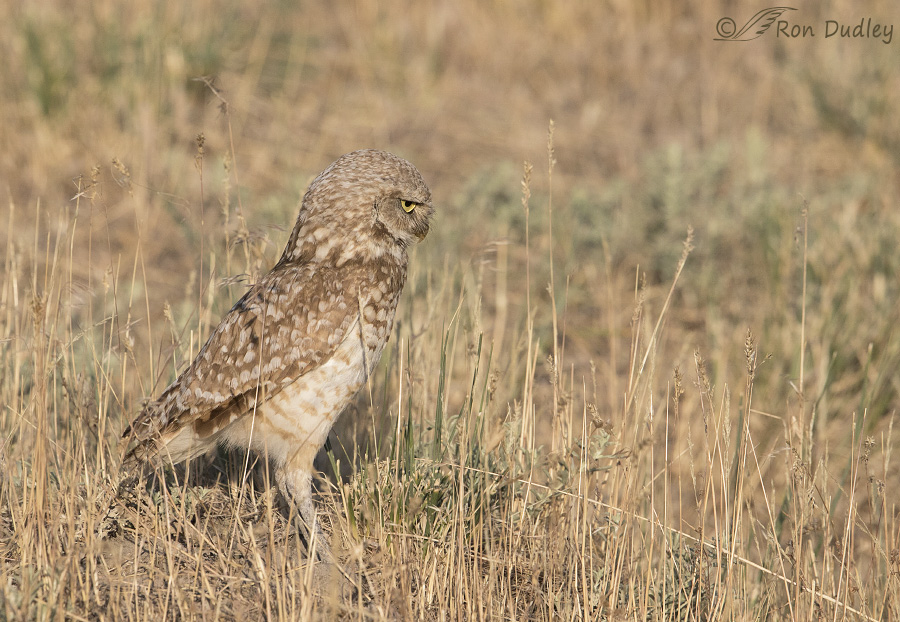
I do love your behavioural posts. I learn from them each and every time. Thank you rather a lot for revisiting this one. Brave meadowlark.
Thank you, EC.
Love those Bette Davis eyes and those stern looks. Super diving take off shot and really enjoyed the last few shots going from focus on one to the other. And glad you included that last shot show where they were and the distance between etc. Excellent post.
Everett, thanks for appreciating that shot with both birds pretty much in focus. I probably should include photos like that a little more often.
I remember this post — peekaboo or not, that is one of my favorite owl shots! I can definitely feel the tension between the two birds. The owl seems angry that he lost his vantage point in the last slide, although Burrowing Owls always look a bit miffed to me.
I can definitely feel the tension between the two birds. The owl seems angry that he lost his vantage point in the last slide, although Burrowing Owls always look a bit miffed to me.
We’re starting to get some smoke from the Line Fire all the way out by the coast. 26,000+ acres and only 5% containment. Fortunately, the triple digits are done for the time being, so that should help, although it’s supposed to be windy today. Hoping the wind will force the fire back on itself near the more populated areas. Devastating snowfall a couple of years ago and now this.
Marty, the owl mostly ignored the meadowlark but it was perfectly obvious that it knew the smaller bird was there and what it was doing.
Good luck with that Line Fire and the smoke it produces. These fires are just awful.
Marty: I feel for you on the firefront. So much. I hope it can be contained quickly.
Very interesting, the back and forth with the two birds. Thank you for including the smaller lens photo, which shows so nicely how close they were to each other, and the size difference. It answered all the questions I had when I was looking at the other photos.
The fire map shows a whole lot of Utah under fire alert – hope you all are safe.
It answered all the questions I had…”
I’m delighted to hear that, Carolyn. I try to anticipate potential questions but I’m not always successful.
That is a cool story and a really good depth of field illustration. The eye in the third image would have been nice but in this case I don’t think it detracts at all.
I’m glad you enjoyed both. Thanks, Bruce.
“nature photographers who understand their subjects well”, etc.
really says the truth ! Your efforts in learning the habits and
behaviors of your subjects has paid off so well–not only for
your accomplished “captures”, but for all of your FP posse who
love learning from your commentary==thanks !
Thanks very much, Kris.
Interesting set of photo’s – yep DOF goes to hell with a “long lens”… Songbirds don’t even like owls around! Have heard the churt but never connected it to a meadow lark!
Songbirds don’t even like owls around! Have heard the churt but never connected it to a meadow lark!
Smoke horrific Sun. night and most of Mon. UGH! Cleared off some over night tho back this morning even if not as bad. Needed rain coming in the next few days in theory – of course, family reunion of sorts coming up……
Judy, I have good friends in Boise. That part of Idaho is burning up. It’s just awful.
Thanks for the repost Ron. These two are among my favorite birds.
Do so enjoy your behavioral documentation posts.
“…nature photographers who understand their subjects well inevitably become better photographers.”
Your level of understanding really shows in your work.
Very much appreciated, Michael.